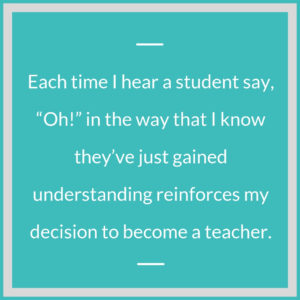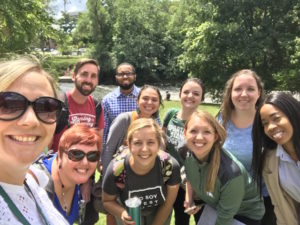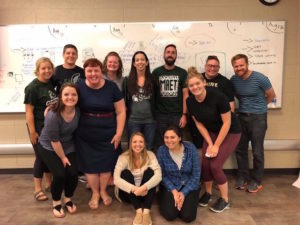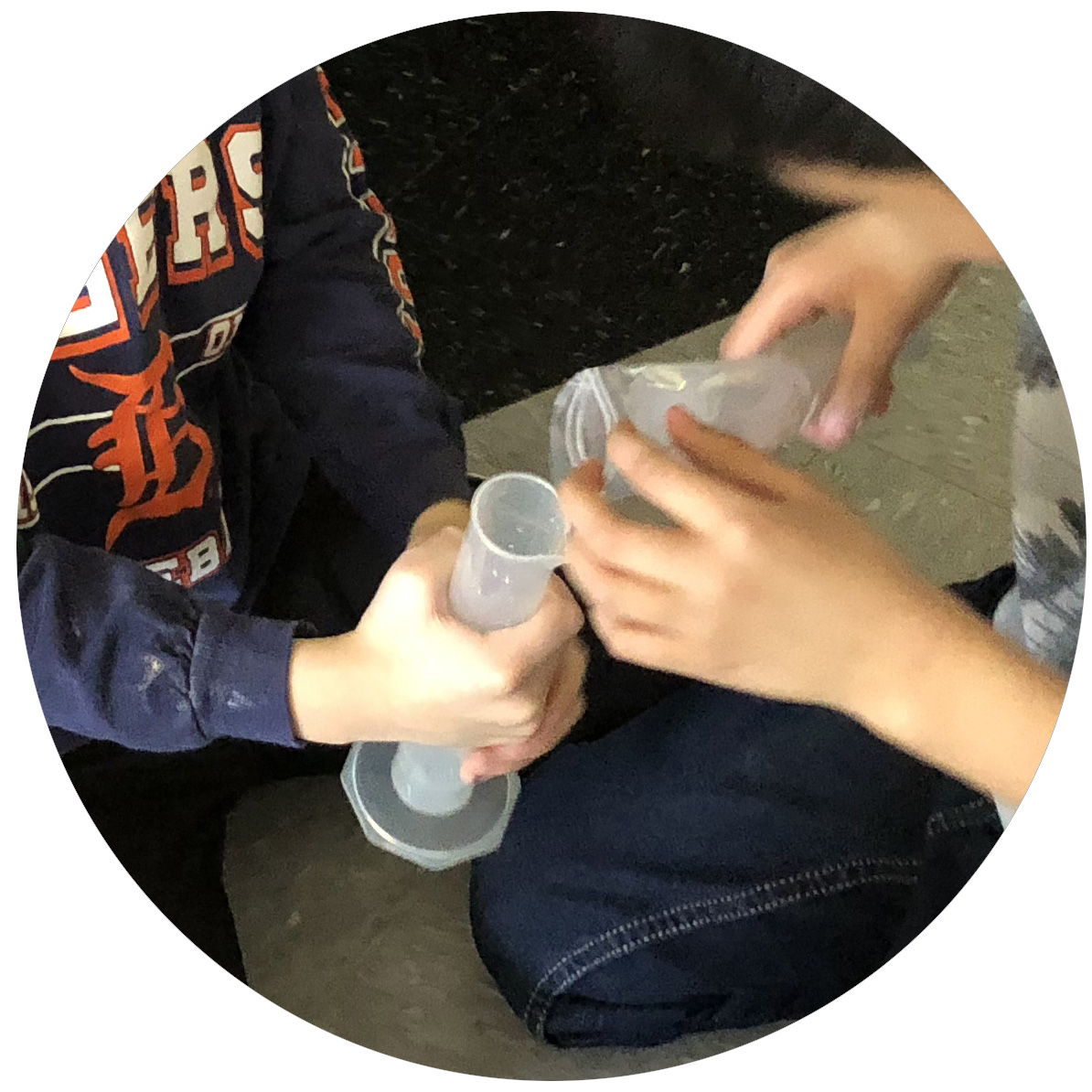Looking To My Students’ Bright Futures
After several years of hard work, I am approaching the end of my Master of Arts in Educational Technology (MAET). Each class has uniquely challenged me, presenting new opportunities for growth and learning, as well as goal-setting and reflection. Looking forward, it only makes sense to consider how to continue to grow as a teacher outside of the structure of my coursework.
As a teacher in two Title One schools in a university town, I have many students who come from extreme poverty, are English learners or are receiving Special Education services. These students sometimes struggle in the challenging computer science and engineering courses I teach yet relish the opportunity to engage in active, hands-on, project-based learning. I want to continue to make these opportunities meaningful for all my students. As such, I have identified three areas where I want to focus my efforts. First, I want to continue to research and share strategies with other teachers for supporting struggling learners. Second, I would like to add more hands-on activities to my curriculum. Finally, I want to continue to refine my classroom management skills.
Supporting Struggling Learners
Working with at-risk students can be challenging but it is also deeply rewarding. Each time I hear a student say, “Oh!” in the way that I know they’ve just gained understanding reinforces my decision to be a teacher.  Nevertheless, this sensitive population sometimes needs additional support to be successful. As part of my coursework, I researched strategies for supporting struggling learners of computational thinking and computer science. I discovered that many of the strategies for supporting students with learning computational thinking can be applied to the teaching of other subjects and content, also. In the interest of helping as many students as possible, I would like to share this research with other educators. To do this, I will engage with my professional learning network (PLN) in search of conferences and professional development opportunities. Specifically, I will keep contributing to the #michED and #TynkerChat Twitter chats as they both apply directly to my teaching.
Nevertheless, this sensitive population sometimes needs additional support to be successful. As part of my coursework, I researched strategies for supporting struggling learners of computational thinking and computer science. I discovered that many of the strategies for supporting students with learning computational thinking can be applied to the teaching of other subjects and content, also. In the interest of helping as many students as possible, I would like to share this research with other educators. To do this, I will engage with my professional learning network (PLN) in search of conferences and professional development opportunities. Specifically, I will keep contributing to the #michED and #TynkerChat Twitter chats as they both apply directly to my teaching.
 |
 |
 |
| My PLN includes my MAET year 1 and year 2 cohorts, my PLTW team, and others. | ||
Engaging in Hands-On Learning

Most of my students are delighted by the opportunities I bring them to engage in hands-on, inquiry-based learning. Whether they are writing code or engineering a physical solution to a problem, they are excited about these experiences. Even though the computer science and engineering curriculum I teach has many hands-on activities built in, I recognize that my students would benefit from more in order to further motivate them and deepen their learning. To supplement the curriculum I teach, my district has asked my cohort of PLTW teachers to include a select number of lessons from Phenomenal Science, a free resource created by Michigan Virtual University in partnership with the Science, Mathematics, Technology Center at Central Michigan University. My PLTW cohort will be participating in Next Generation Science Standards (NGSS) training and working together to enhance our curriculum. By digging deeper into the Phenomenal Science lessons and the NGSS on which they are based, I can add more inquiry-based activities to enhance my curriculum.
Managing My Classroom
Finally, I want to become a better classroom manager. As a special area teacher, it can be a challenge to develop the kind of rich and abiding relationships with students that have a positive, lasting impact on classroom behavior. When students come to my class and misbehave, it wastes precious time and causes anxiety and stress for other students and me. It creates an environment that makes it difficult to engage in the hands-on activities we enjoy and eliminates any possibility of supplementing curriculum with additional hands-on activities. In my two schools, we use a combination of Positive Behavior Interventions & Supports (PBIS), Responsive Classroom, and restorative justice practices. Responsive Classroom and restorative justice practices naturally align with my personal teaching style. My plan, therefore, is to begin doing independent research into applying restorative justice practices and responsive classroom techniques in my specials classes as I teach every child in both of my buildings. Once I develop a better understanding of these techniques, I will work alongside classroom teachers to refine my vocabulary and mirror techniques used in the classroom.
Closing Thoughts
My students are exceptional. They deserve exceptional teaching and exceptional opportunities. To continue to grow as the teacher they deserve, I want to share the learning supports I’ve discovered with other educators, supplement my curriculum with additional hands-on activities, and hone my classroom management skills. And as I work to meet those goals, I will always discover more.
Images
All images on this page were created by Sarah Van Loo.

